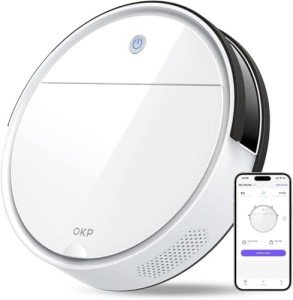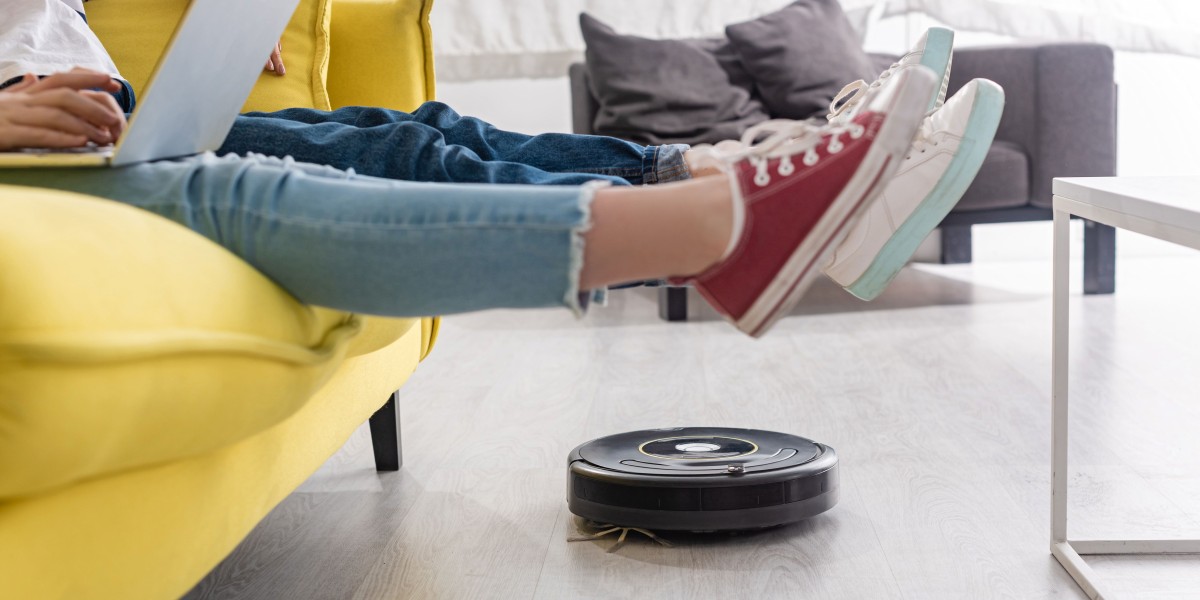In the ever-advancing world of technology, the vacuum robot has risen as a game-changing innovation, seamlessly blending convenience, efficiency, and modern design. A few short decades ago, the concept of a machine autonomously cleaning your floors sounded like something straight out of science fiction. Today, however, robotic vacuums are not only a reality but a staple in many households worldwide. This article delves into the intricacies of these handy devices, exploring how they work, their benefits, and what to consider when purchasing one, while addressing common questions.
What is a Vacuum Robot?
A vacuum robot, also known as a robotic vacuum cleaner, is a small, disc-shaped cleaning device that autonomously navigates your home to clean floors. Using sensors, processors, and motorized brushes, it vacuums dirt, dust, and debris from surfaces—eliminating the need for manual involvement.
Initially introduced as a novelty, vacuum robots have undergone significant evolution. Modern units are capable of advanced features such as mapping your home, connecting to Wi-Fi, and even emptying themselves. They cater to busy households, people with mobility challenges, or anyone simply looking to reduce their cleaning workload.
How Do Vacuum Robots Work?
At the core of a vacuum robot’s functionality is its intelligent navigation system. Equipped with sensors, cameras, and software, vacuum robots can chart pathways, avoid obstacles, and detect areas requiring additional cleaning.
Here’s a simplified step-by-step overview of how they operate:
- Mapping the Space: Advanced models use LiDAR, cameras, or lasers to create a virtual map of your home. This helps the device navigate efficiently rather than cleaning at random.
- Detecting Dirt and Debris: Sensors monitor for dirt, dust, or hair while ensuring that the vacuum avoids obstacles like furniture or stairs.
- Cleaning Modes: Many robotic vacuums offer customizable modes—ranging from spot cleaning to edge cleaning.
- Automatic Recharge: When the battery runs low, the robot returns to its charging dock automatically to recharge before resuming the cleaning cycle.
Robotic vacuums are compatible with various floor types, including hardwood, carpets, and tiles, making them versatile tools for diverse living spaces.

The Benefits of Vacuum Robots
Vacuum robots provide many advantages, beyond simply saving time and effort. Here’s why they are garnering such widespread appeal:
Time-Saving Convenience
Vacuum robots operate autonomously, allowing homeowners to focus on other tasks or simply relax. They can even be scheduled to clean while you’re out of the house.Compact and Accessible
These devices are compact in size, www.robotvacuummops.uk easily sliding under furniture and into hard-to-reach areas where traditional vacuums struggle to access.Smart Technology Features
Modern robotic vacuums often connect to smartphone apps, enabling remote control, cleaning schedules, and status monitoring. Integration with smart home systems like Alexa or Google Assistant enhances their usability.Customizable Cleaning Settings
Adjustable suction power, mapping preferences, and cleaning zones make robotic vacuums more efficient and suited to individual household needs.Energy Efficiency
Vacuum robots consume less energy compared to many traditional vacuums, reducing overall electricity bills.Reduced Allergens
Many robotic vacuums include HEPA filters, which capture allergens, making them a great choice for households with pets or allergy sufferers.
Features to Consider When Buying a Vacuum Robot
With a wide variety of options available on the market, choosing the right vacuum robot can feel overwhelming. Keep the following factors in mind before making a purchase:
Battery Life
Look for models with long battery life, especially if you have a large home. Most devices can operate for 60 to 120 minutes on a single charge.Navigation System
Advanced navigation technologies, such as LiDAR or camera-based mapping, provide higher efficiency and prevent the vacuum from getting stuck in certain areas.Dustbin Capacity
A larger dustbin reduces the frequency of emptying the container, which is especially useful in busy or pet-friendly homes.Floor Type Compatibility
Ensure that the model you select works efficiently on the specific floor types in your home, particularly if you have high-pile carpets or delicate hardwood flooring.Cleaning Power
Models with adjustable suction levels and side brushes deliver better cleaning performance, especially in areas prone to heavy dirt or pet hair accumulation.Automatic Dirt Disposal
Some high-end models feature self-emptying bins, reducing maintenance responsibilities.Integration and App Features
Smartphones compatibility, Wi-Fi integration, and smart home connectivity add tremendous flexibility and control to your cleaning schedule.Budget
Robotic vacuums range widely in price—from budget-friendly options around £200 to premium models exceeding £1,000. Assess your needs before determining the price category.
FAQs About Vacuum Robots
Q: Do vacuum robots replace traditional vacuums?
A: While robotic vacuums are excellent for maintaining cleanliness, they may not completely replace traditional vacuums for deep cleans or tackling heavy-duty messes.
Q: Are vacuum robots noisy?
A: Most robotic vacuums operate at a significantly lower noise level compared to traditional models, making them suitable for use even during night hours.
Q: Are vacuum robots safe for use around pets?
A: Yes, most vacuum robots are pet-friendly, and many models are specifically designed to handle pet hair without tangling.
Q: Can vacuum robots climb over thresholds?
A: Modern robotic vacuums can usually navigate small thresholds or uneven surfaces (up to around 0.5 inches), but it’s best to verify individual model specifications.
Q: How often should I clean the robot’s dustbin and filters?
A: Dustbins should be emptied after every cleaning cycle, and filters should be cleaned or replaced as per the manufacturer’s recommendation—typically every 1-3 months.
A Brief Look at the Future of Vacuum Robots
The robotic vacuum industry continues to evolve, integrating new features to elevate user experience. Future innovations may include:
- Improved AI algorithms for enhanced decision-making and cleaning patterns.
- Wider adoption of wet-and-dry vacuum robots for mopping capabilities alongside vacuuming.
- More affordable models with premium features, catering to a wider consumer base.
As smart home technology expands, vacuum robots are expected to play an even more integral role in household maintenance.
Conclusion
The vacuum robot is not just a product of technological advancement but a reflection of how innovation can cater to the practical needs of modern households. With an array of models suited to diverse budgets and needs, these devices have brought convenience and cleanliness within easy reach. Though they may not yet entirely replace traditional cleaning methods, as they continue to improve, vacuum robots are set to take household cleaning into the future.
By equipping yourself with all the information and considerations outlined above, you’ll be well-prepared to choose the perfect vacuum robot that fits both your lifestyle and cleaning requirements. So, embrace the future, and let your home cleaning be smarter, faster, and more efficient with this remarkable invention.





